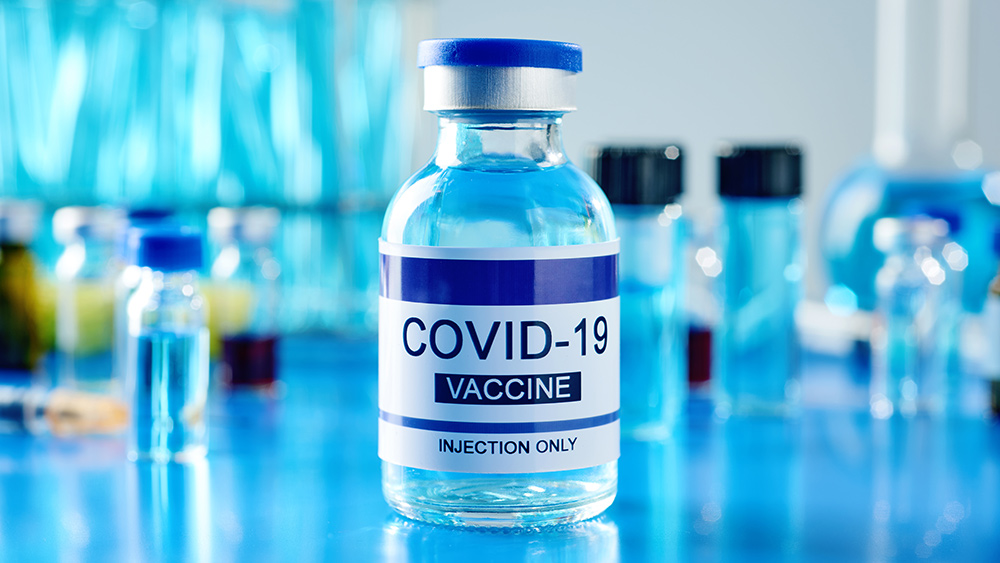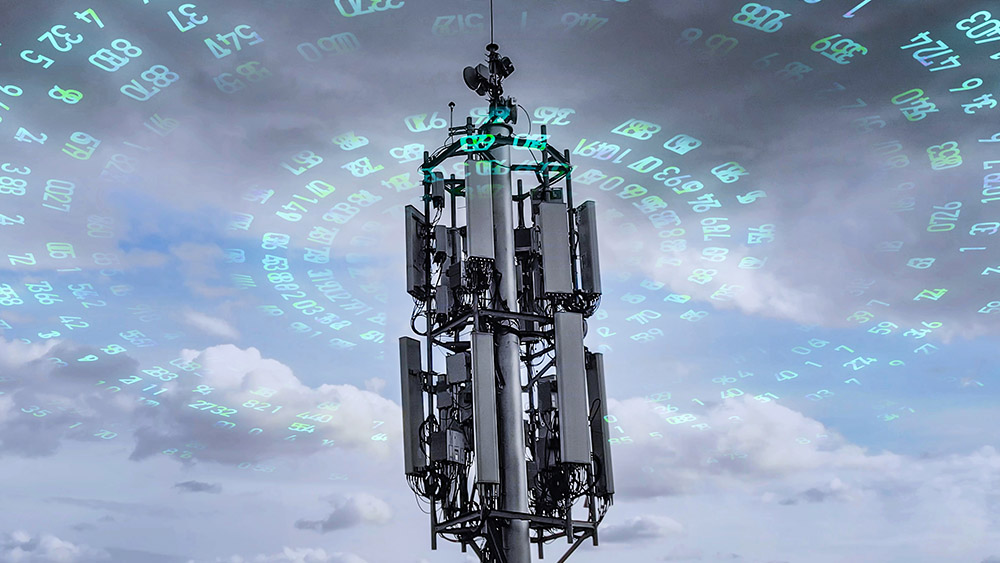Babies in Wi-Fi-dense homes face triple risk of developmental delays: Study warns of emerging health crisis
08/23/2025 / By Willow Tohi

- A study links high wireless radiation exposure to developmental delays in infants, including problem-solving and motor skill challenges.
- Babies in homes with radiation levels exceeding 1 mW/m² faced three times higher risks compared to low-exposure cohorts.
- Experts urge stricter safety limits, citing parallels to the tobacco industry’s historical misinformation.
- Children’s vulnerability stems from higher RF absorption in developing brains.
- Calls to action include reducing wireless tech in homes, especially near infants and for policy reforms.
Infants living in homes with elevated wireless radiation levels face significantly higher risks of developmental delays, according to a newly published study from Mumbai. Researchers found that babies exposed to high levels of radiation from Wi-Fi, cellphones and nearby cell towers showed triple the likelihood of delays in problem-solving, fine motor skills and social interaction compared to those in low-exposure environments. Published in the journal Cureus, the study evaluated 105 babies aged 2-12 months, measuring radiofrequency electromagnetic field (RF-EMF) radiation in their homes and assessing neurodevelopmental outcomes.
The findings align with mounting concerns about children’s vulnerability to electromagnetic fields (EMF). Dr. Robert Brown, a radiologist with the Environmental Health Trust (EHT), called the results a “dire situation,” emphasizing that children’s developing brains and higher water-ion content make them more susceptible to radiation. The study’s authors noted that babies in high-exposure homes (median radiation: 32.36 mW/m²) had 2.74 times greater fine motor delays and 3.67 times more problem-solving deficits than low-exposure groups. Zero infants in low-exposure homes (0.62 mW/m²) showed emotional-social issues, whereas 11.5% in high-exposure homes did.
“We’re seeing a stark pattern: higher radiation exposure correlates with poorer neurodevelopmental outcomes—even after accounting for socioeconomic factors and birth weight,” said the study’s lead author, Suzanne Burdick, Ph.D.
How the study was conducted
Researchers measured wireless radiation in Mumbai homes using a Selective Radiation Meter, then divided the infants into high, medium and low-exposure groups. Parents answered neurodevelopmental screening questionnaires every month for a year, assessing skills like stacking blocks or responding to sounds. Statistical analyses confirmed radiation exposure as a key predictor of delays, even after adjusting for variables like socioeconomic status.
The radiation thresholds alarmed public health advocates. Homes in the high-exposure group exceeded 32 mW/m²—far surpassing the 1 mW/m² limit deemed “extreme concern” by building biologists, though the FCC allows up to 10,000 mW/m². “These FCC limits are dangerously outdated,” said Fariha Husain of Children’s Health Defense. Engineer Eric Windheim added that such high readings are rare in the U.S. except near cell towers or ultra-connected households.
Experts call for policy shifts and public awakening
The study fuels broader debates about regulating wireless technology. Miriam Eckenfels of Children’s Health Defense likened the situation to the tobacco industry’s decades-long suppression of health risks, noting emerging peer-reviewed research linking wireless radiation to cancer and DNA damage. “Parents have a right to know about these risks,” she said.
Dr. Brown highlighted absurd industry oversight: “Healthy adults showed abnormal blood cell clumping after just five minutes with a phone on their leg. Imagine the cumulative impact on infants.” Joe Sandri of EHT urged manufacturers to adopt “simple engineering fixes,” stressing, “The industry must start competing on safety, not just speed.”
The American Academy of Pediatrics has long warned that children absorb twice as much cell phone radiation as adults, and pregnant women face heightened risks for fetal exposure. The BioInitiative Report (2012) similarly linked wireless radiation to potential ties with autism and called for reduced exposures.
Historical context: A repeat of the tobacco era?
The parallels between the wireless industry and Big Tobacco are striking. As corporations downplayed risks by discrediting studies, the general public remained unaware. “We’re at risk of repeating that tragedy,” said Sandri. Over 200 studies cited in the Defenders’ archives tie EMF exposure to childhood leukemia, leukemia in children of prenatal cell phone users and cognitive deficits in adolescents.
The Indian study arrives amid a global expansion of 5G infrastructure, which crams devices with higher-frequency radiation. “This isn’t just about convenience—5G poses new risks,” notes the study’s co-author. “We need transparency from regulators and safer alternatives for families.”
Protecting our future: Simple steps for families
While further research is needed, actionable advice exists. Experts recommend:
- Reducing wireless devices in homes, especially bedrooms. “Shut off Wi-Fi at night to minimize exposure during sleep,” advises the AAP.
- Using wired internet through fiber optics instead of Wi-Fi.
- Keeping phones in airplane mode when near children.
- Lobbying for safer radiation standards and transparency from telecom companies.
“For many parents, it’s a sacrifice to unplug, but protecting a child’s future is worth it,” said Dr. Brown.
A path forward for health and safety
The Mumbai study underscores a critical window for intervention: infant developmental stages are irreplaceable. As advocates push for policy changes, families can reduce risks now. “Children’s health shouldn’t be collateral damage in the tech race,” said Sandri. “Let’s demand truth and safer innovation.” With stakes this high, the message is clear: shield the next generation from invisible threats—one Wi-Fi router off at a time.
Sources for this article include:
Submit a correction >>
Tagged Under:
awakening, baby brain, brain health, dangerous tech, EMF, future tech, glitch, radiation, research, WiFi
This article may contain statements that reflect the opinion of the author
RECENT NEWS & ARTICLES
COPYRIGHT © 2019 Dangerous.News
All content posted on this site is protected under Free Speech. Dangerous.News is not responsible for content written by contributing authors. The information on this site is provided for educational and entertainment purposes only. It is not intended as a substitute for professional advice of any kind. Dangerous.News assumes no responsibility for the use or misuse of this material. All trademarks, registered trademarks and service marks mentioned on this site are the property of their respective owners.




















